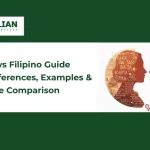Have you ever been in a situation where you needed to submit a document from overseas, such as a birth certificate, university transcript, or legal contract, to an Australian authority? Or you’re sending an Australian document to another country, and the officials ask for a certified translation or a notarized translation.
Although you possess the translated version, the certification and notarization may be confusing. Since it’s not as simple as just getting it translated, this guide will demystify the process for you.
Please note that making mistakes can result in frustrating delays, rejections, and additional costs. Therefore, understanding the distinction between these two key services is crucial for ensuring that your documents are accepted without issue, whether you’re dealing with the Department of Home Affairs, a university, or an overseas legal body.
What Is a Certified Translation?
In Australia, a certified translation is the official standard required by government bodies and institutions. It specifically refers to a translation completed by a professional certified by NAATI (the National Accreditation Authority for Translators and Interpreters).
NAATI accreditation is the government-recognised measure of a translator’s skill, linguistic knowledge, and ethical competence. When a NAATI translator completes your document, they will affix their official stamp or seal, along with their signature and a statement certifying that the translation is a true and accurate representation of the original document.
This is why, if you need to translate documents for immigration (Department of Home Affairs), legal proceedings, or university applications, you will require a NAATI-certified translation to ensure it is accepted without question.
What Is a Notarized Translation?
A Notary Public is a senior lawyer with the authority to witness signatures and certify documents. Their role is to:
A. Verify the translator’s identity (e.g., by checking their driver’s license or passport).
B. Witness the translator signing the declaration.
C. Affix their own official seal and signature to the document.
Crucially, the Notary Public does not check the translation for accuracy. They are only certifying that the signature on the translator’s declaration is genuine. This process adds a layer of legal formality, which is often required for documents being sent overseas.
What Is the Difference between a Notary and a Translation?
The roles are entirely separate:
- A Translator is a language professional who converts a document from one language to another, certifying its accuracy.
- A Notary Public is a legal professional who verifies the identity of the person signing a document and authenticates it to make the document legally official. They are not concerned with the content of the translation.
Why Notarized Translations Are Important?

While a certified translation vouches for the accuracy of the content, a notarised translation adds a layer of formal, legal verification that is crucial in specific, high-stakes situations. Notarised translations are important because they provide legal authentication, prevent fraud, and ensure international acceptance for official documents.
Here are the key reasons why notarised translations are important:
Required for International Use
This is the most common reason for notarization. Many foreign governments, legal systems, and institutions require notarised translations to ensure the authenticity of the document. This helps bridge legal and linguistic divides by providing a trusted standard across borders.
Prevents Fraud & Ensures Integrity
The notarisation process acts as a deterrent to fraud. By officially verifying the translator’s identity, a Notary Public ensures that the individual taking responsibility for the translation is accountable. This protects personal rights and the integrity of the document.
Adds Legal Validity and Official Recognition
Notarization transforms a translated document into a legally valid instrument. Since notarization proves the translator’s identity and the translator affirms the translation accuracy and authenticity, the document is quickly accepted for all official purposes.
Fulfils Specific Requirements of Institutions
- Legal Proceedings: Legal documents translation, like contracts, court orders, affidavits, and powers of attorney, often require notarization for use in international legal matters.
- Educational Credentials: When submitting diplomas and academic transcripts to foreign universities, a certified notarized translation may be required to verify their authenticity.
- Immigration: While not always required in Australia, some countries’ immigration authorities may request notarized and certified translations of birth certificates, marriage licenses, and other personal records.
- Business Transactions: For international business contracts, financial statements, and property deeds, notarization provides legal assurance to all parties.
Is a Notarized Translation the Same as a Certified Translation?
What Is the Difference between a Certified Translation and a Notarized Translation?
Let’s check out the difference between notarized and certified translations:
| Feature | Certified Translation (Australia) | Notarized Translation |
|---|---|---|
| Who provides it | NAATI-accredited translator | NAATI translator + Notary Public |
| What is included | Translator certifies accuracy and completeness; signs and stamps translation | Translator swears an oath regarding accuracy before a notary; notary witnesses signature |
| Notary's role | Not involved | Confirms translator’s identity and witnesses certification; does not judge translation quality |
| Legal standing | Accepted by most Australian government and official bodies | Required for some legal, overseas, or special applications |
| Typical use cases | Immigration, passports, birth certificates, driver’s licenses, and most official document submissions | Court cases, international/foreign authorities, and academic purposes abroad |
| Requirement | Standard for Australian purposes, unless expressly asked for notarization | Only needed if specifically required by the receiving institution |
| All certified notarized? | No | All notarized translations are also certified |
How Do Notarized and Sworn Translations Differ?
| Feature | Notarized Translation | Sworn Translation |
|---|---|---|
| Who provides it | Professional translator, then notarized by a notary public | Sworn translator (appointed, licensed, or officially recognized by a court or government) |
| Legal process | Translator certifies accuracy, takes document to a notary public who verifies the translator's identity | Translator swears an oath before a court official, notary, or government authority, stating accuracy |
| Scope of notary/court | Notary does not check the translation itself, only confirms the signature/identity of the certifier | Sworn translator's status and oath give the document legal value and authenticity |
| Country/Region Usage | Common in Australia, US, UK, and other common law countries | Common in civil law countries: Spain, France, Germany, Italy, etc. |
| Legal Value | Depends on the requirements of specific bodies, provides procedural formality | Carries legal and evidentiary weight attached to the translator’s government authority |
| Typical Requirement | Court documents, power of attorney, sometimes required for foreign submissions | Judicial processes, marriage, birth or academic documents abroad, court proceedings overseas |
| Certification | Yes, a declaration is included, but legal effect comes from notarization | Yes, but legal effect comes from translator’s sworn status and oath |
| Translator Type | Any professional/qualified translator | Only officially appointed sworn translators |
The Process in Australia: How to Get a Translation Certified and Notarized
How to Hire a Certified Translator in Australia: Follow the Steps below:
- Search for a certified translator from the NAATI online directory. Alternatively, you can search for a reliable certified translation service.
- Share your requirements with them and upload a scanned photo of the original document. Please specify your language pair, purpose, and deadline.
- Complete the payment through secure methods, such as bank transfer, credit, or debit card.
- Get a translated document that has been certified by a NAATI translator with a digital stamp and signature affirming the accuracy of the translation.
What Is the Process of Notarizing a Translation: Follow the Steps below:
- Once you have completed the certified document translation, locate a Notary Public. Notary Publics are senior lawyers with special qualifications.
- The best option is to search for one through your state’s Law Society or by searching for “Notary Public” in your area.
- Now, book an appointment and inform the NAATI translator, as they need to attend the appointment.
- The translator will sign an affidavit confirming that the translation is accurate and complete to the original version of the document.
- The Notary Public will verify the translator’s identity. Finally, they will witness the affidavit by signing and attesting with their official seal.
Who Can Provide You with Notarized Translations in Australia?
A single person does not provide a notarised translation in Australia, but it is the result of a collaboration between two distinct professionals:
1. A NAATI-Certified Translator: This is a language specialist who the NAATI accredits. Their primary role is to perform the translation and certify that it is an accurate and true representation of the original document.
2. A Notary Public: This is a senior lawyer with the specific legal authority to witness signatures and officially authenticate documents. Their role is not to check the translation’s quality, but to formally verify the identity of the translator who is signing the affidavit.
While you can hire these two professionals separately, many professional translation services offer a streamlined service. They will manage the entire process for you, from assigning a NAATI translator to coordinating the appointment with a Notary Public, providing you with the final, fully notarised document. This is often the most convenient option.
When Do You Need Certified and Notarized Translations in Australia?
Knowing whether you need a certified or a notarized translation can be simplified with one golden rule: Where will you be submitting the document?
For Documents Used within Australia: Certified Translation Is the Standard

For most official purposes within Australia, a NAATI-certified translation is all that is required. Australian government departments, educational institutions, and other official bodies rely on the NAATI system to ensure the accuracy and professionalism of translations.
Immigration (Department of Home Affairs)
When submitting documents for immigration, you will need a certified migration translator or translation company, such as for visa applications, supporting documents, or evidence to the Department of Home Affairs.
University applications
When providing foreign academic transcripts, diplomas, or certificates to Australian universities or colleges, you need documents that require translation to be certified.
Centrelink or Medicare.
When dealing with federal or state agencies, such as Centrelink or Medicare, or when obtaining an Australian driver’s license, there are specific translation requirements.
For Documents Sent Overseas: Notarized Translation is Often Required

You will likely need a notarized translation for:
International Court Proceedings:
Submitting legal documents like affidavits, witness statements, or evidence for use in a foreign court.
Overseas Business Transactions:
Executing international contracts, property deeds, or financial statements where legal validity across borders is essential.
Foreign Government Requirements:
Applying for dual citizenship, residency, or a visa in another country that specifically requests notarized documents.
Frequently Asked Questions
Should I Apostille or Translate First?
You need to translate your document first and then get an Apostille. Read this blog to know more about how to get an apostille in Australia.
Can I Notarize a Translated Document?
No. You cannot notarize any document. To translate and notarize a document, you need to connect certified translators or translation agencies who offer official translation that the Notary Public will notarise, after verifying the translator’s identity and credentials.
What’s the Point of Sworn Translations?
Just as notarized translation is a translation where the officials verify the translator’s identity, the sworn translator is a translator who the court or government recognises.
What Is a Notarized English Translation?
It is a type of translation where the notary official verifies the translator after the appointment, where the translator signs the affidavit confirming accurate translation of the document that needs translation.
What Is a Notarized Affidavit Translation?
A Notarized Affidavit Translation is a highly formal document used in legal and official settings. It consists of two key parts:
- The Translation must be a complete and accurate translation of the original affidavit.
- The Translator’s Affidavit is a separate, sworn statement signed by the translator in the presence of a Notary Public, attesting to the accuracy of their translation.
What Is an Officially Translated Document?
A certified translation is one that bears a digital NAATI stamp and signature, which is provided by a certified or recognised translator of the NAATI.
When Is a Notarized Translation Necessary?
Notarized translations are typically required for official purposes, such as legal proceedings, visa applications, or submitting documents to government bodies. A notary public certifies the translator’s identity and that the translation is a true and accurate representation of the original.
Who Can Notarise Documents in Australia?
In Australia, documents can be notarized by a public notary, who is a senior lawyer with additional qualifications. They verify a person’s identity and witness signatures, thereby certifying the authenticity of the document for use internationally.
Do I Need Notarized Translation for USCIS?
The United States Citizenship and Immigration Services (USCIS) accepts both notarized and certified translations. However, it requires notarized translations for some documents. Therefore, check the requirements carefully.
Can I Translate a Document and Get It Notarized?
No. To be notarized, the translation must be done by a professional certified translator who signs a declaration of accuracy in the presence of a notary public. A notary cannot certify a translation done by the document’s owner.
Does a Translated Birth Certificate Need to be Notarized?
It depends on the specific requirements of the receiving authority. For official purposes, such as an Australian visa application or to be used overseas, it’s often a requirement. The notary public’s seal authenticates the document for use outside Australia.
Do Translated Documents Need to Be Notarized in Australia?
For use within Australia, translated documents from a NAATI-accredited translator are usually sufficient. However, for use overseas or in specific legal contexts, notarisation may be necessary to certify the authenticity of the translation.
Is AustralianTranslationServices a Notarized Translation Service?
AustralianTranslationServices is a reputable provider of NAATI-accredited translations. We can also arrange for a public notary to certify the translation, providing a full, notarized translation service for official use, both locally and internationally.
Where to Get Birth Certificate Translated and Notarized Near Me?
Yes, you can get your birth certificate translated done by our NAATI-accredited translator, and we can then arrange for a public notary to notarize it for you.
- Language Disorder or Language Difference: How to Know? - November 29, 2025
- AI Localization and Automation: Best Practices for Translation - November 13, 2025
- Australian Work Visa: Get Approved Fast with This Step-by-Step Guide! - October 28, 2025







